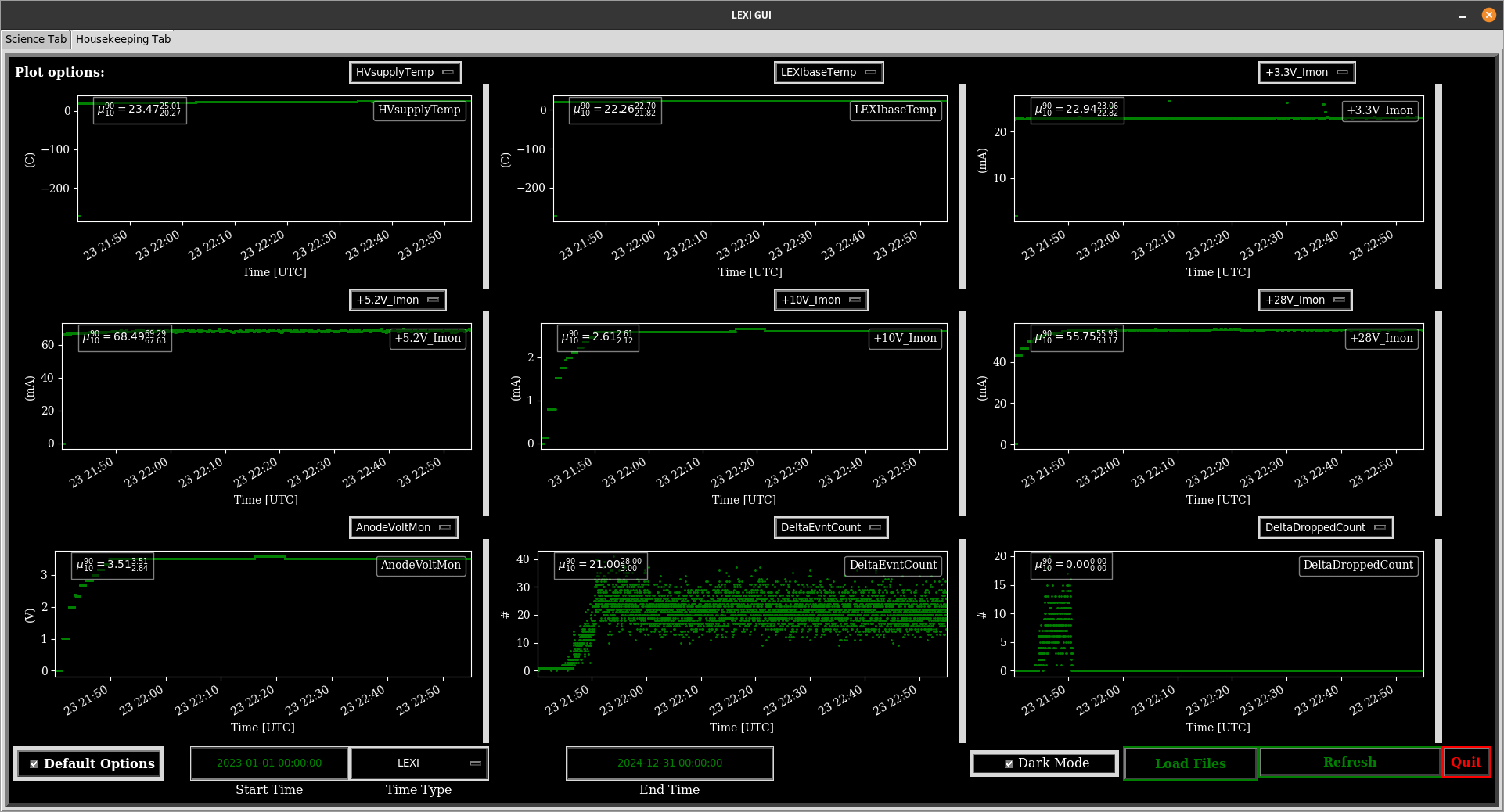-
Download the code or clone the repository using the command
$git clone git@github.com:Lexi-BU/lxi_gui.git -
Create a virtual environment using the command
$python3 -m venv lexi_gui_env(or any other name you want to give to the environment) (for Ubuntu) a. Might need to install the python3 venv package using the command$sudo apt-get install python3-venv(for Ubuntu) -
Activate the virtual environment using the command
$source lexi_gui_env/bin/activate -
Install the required packages using the command
$pip install -r requirements.txt -
Run the file
lxi_gui.pyusing the command$python lxi_gui.py(or$python3 lxi_gui.pyif you have both python2 and python3 installed). -
Can also run the file by simply using the command
$./lxi_gui.sh(if the file is an executable file).
-
Download the code or clone the repository using the command
$git clone git@github.com:Lexi-BU/lxi_gui.git -
cd into the folder using the command
$cd lxi_gui -
Install poetry using the command
$pip install poetry -
Install the required packages using the command
$poetry install -
Start the virtual environment using the command
$poetry shell -
Run the file
lxi_gui.pyusing the command$python lxi_gui.py(or$python3 lxi_gui.pyif you have both python2 and python3 installed). -
Can also run the file by simply using the command
$./lxi_gui.sh(if the file is an executable file).
- If you are on Windows, you can download the executable file for LUIGI by clicking on this link: LUIGI Windows
- Download the code.
- Open a terminal in the folder and type
$./lxi_gui.sh. If for some reason this doesn't work, check if the filelxi_gui.shis an executable file or not.- if it is not, then run the command
$chmod a+x lxi_gui.shto make it executable
- if it is not, then run the command
- If you are not using terminal, then use any python (version 3.6 or above, which has pandas and seaborn packages installed) to run the file
lxi_gui.pyand the GUI will pop-up.
Please let me know if you have any trouble in using the program.

